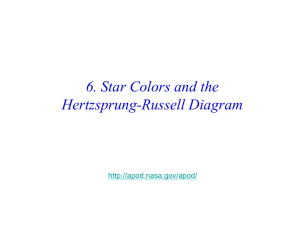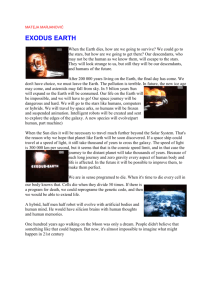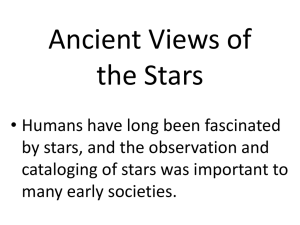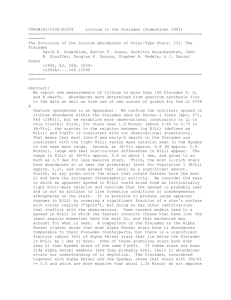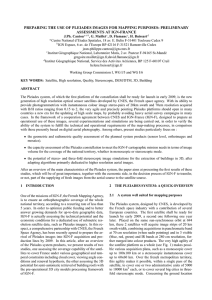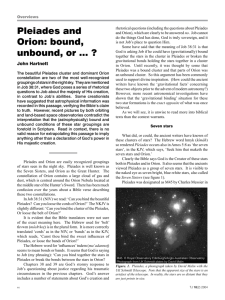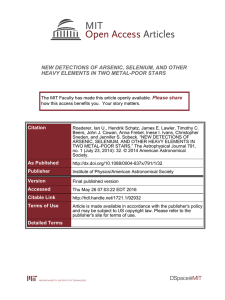Soderblom, D.R. et al. 1993, AJ, 106, 1059
advertisement
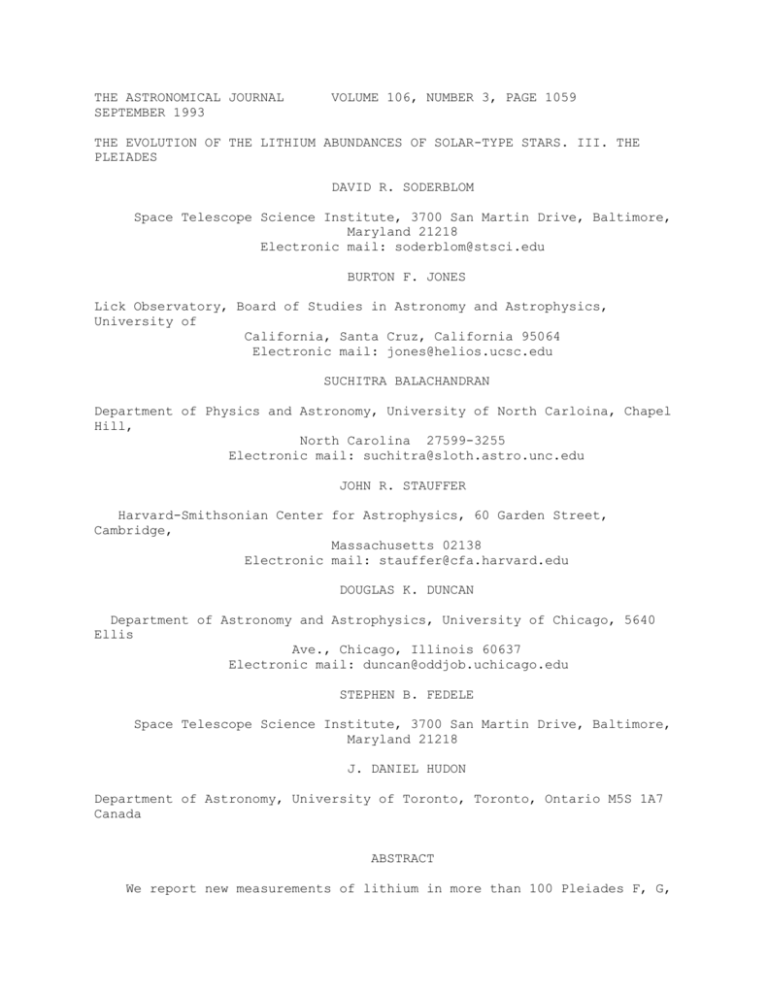
THE ASTRONOMICAL JOURNAL SEPTEMBER 1993 VOLUME 106, NUMBER 3, PAGE 1059 THE EVOLUTION OF THE LITHIUM ABUNDANCES OF SOLAR-TYPE STARS. III. THE PLEIADES DAVID R. SODERBLOM Space Telescope Science Institute, 3700 San Martin Drive, Baltimore, Maryland 21218 Electronic mail: soderblom@stsci.edu BURTON F. JONES Lick Observatory, Board of Studies in Astronomy and Astrophysics, University of California, Santa Cruz, California 95064 Electronic mail: jones@helios.ucsc.edu SUCHITRA BALACHANDRAN Department of Physics and Astronomy, University of North Carloina, Chapel Hill, North Carolina 27599-3255 Electronic mail: suchitra@sloth.astro.unc.edu JOHN R. STAUFFER Harvard-Smithsonian Center for Astrophysics, 60 Garden Street, Cambridge, Massachusetts 02138 Electronic mail: stauffer@cfa.harvard.edu DOUGLAS K. DUNCAN Department of Astronomy and Astrophysics, University of Chicago, 5640 Ellis Ave., Chicago, Illinois 60637 Electronic mail: duncan@oddjob.uchicago.edu STEPHEN B. FEDELE Space Telescope Science Institute, 3700 San Martin Drive, Baltimore, Maryland 21218 J. DANIEL HUDON Department of Astronomy, University of Toronto, Toronto, Ontario M5S 1A7 Canada ABSTRACT We report new measurements of lithium in more than 100 Pleiades F, G, and K dwarfs. Abundances were determined from spectrum synthesis fits to the data as well as from use of new curves of growth for the Li 6708 A feature (presented in an Appendix). We confirm the intrinsic spread in lithium abundance within the Pleiades seen by Duncan & Jones [ApJ, 271, 663 (1983)], but we establish more observational constraints on Li in this cluster: First, for stars near 1.0 M(sun) [about 0.60 to 0.75 in (B-V)o], the scatter in the relation between log N(Li) (defined as N(Li)) and T(eff) is consistent with our observational uncertainty. That means that most late-F and early-G dwarfs in the Pleiades are consistent with the tight N(Li) versus mass relation seen in the Hyades in the same mass range. Second, at (B-V)o approx. 0.8 (M approx. 0.9 M(sun)), large and real star-to-star differences in N(Li) appear. The range in N(Li) at (B-V)o approx. 0.8 is about 1 dex, and grows to as much as 1.5 dex for less massive stars. Third, the most Li-rich stars have abundances at or near the primordial level for Population I (N(Li) approx. 3.2), and none exceed that level by a significant amount. Fourth, at any given color the stars that rotate fastest have the most Li and have the strongest chromospheric activity. We consider the ways in which an apparent spread in N(Li) could arise from an intrinsically tight N(Li)-mass relation and conclude that the spread is probably real and is not an artifact of line formation conditions or inhomogeneous atmospheres on the stars. It is possible to produce large apparent changes in N(Li) by covering a significant fraction of a star's surface with cooler regions ("spots"), but doing so has other ramifications that conflict with the observations. Some current models lead to a spread in N(Li) in which the fastest rotators (those that have lost the least angular momentum) have the most Li, and that mechanism may account for what is seen. A comparison of the Pleiades to the Alpha Persei cluster shows that most Alpha Persei stars have Li abundances comparable to their Pleiades counterparts, but there is a significant fraction (about 30%) of Alpha Persei stars that lie below the Pleiades in N(Li) by 1 dex or more. Some of these anomolous stars have even less Li than Hyades stars of the same T(eff). If these stars are bona fide Alpha Persei members (and they probably are), their Li abundances strain our understanding of Li depletion. The Pleiades, considered together with Alpha Persei and the Hyades, shows that stars with [Fe/H] >= 0.0 and which are more massive than about 1.25 M(sun) do not deplete Li prior to reaching main the sequence. Moreover, solar-abundance stars ([Fe/H] approx. 0.0) with M >~ 1.1 M(sun) do not experience pre-main-sequence depletion either. Pleiades dwarfs near T(eff) = 6700 K show evidence of being depleted in Li, indicating that an incipient Li "chasm" is present even at an age of 70 Myr.


